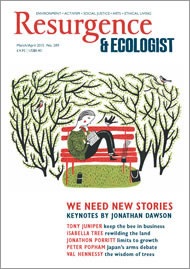First, the good news: Ecuador has announced a major 1,187-acre expansion of the Río Canandé Reserve, which is home to over 360 species of birds and other wildlife, bringing the total area under protection to 6,100 acres. The reserve is part of the Chocó region of north-west Ecuador, home to the highly endangered great green macaw and ranked the fourth most biodiverse hotspot in the world. The expansion of the reserve also connects the Río Canandé to other protected areas, allowing for the free movement of big mammals and primates, safe from hunting and deforestation threats.
In north-eastern Brazil, the first-ever bird reserves in the country have been created to protect the critically endangered – and incredibly beautiful – Araripe manakin, a small bird only discovered in 1996 with fewer than 800 surviving in a tiny 11-square-mile strip of humid forest. Aquasis, a Brazilian conservation organisation, with support from the American Bird Conservancy, has purchased two small parcels of land totalling 167 acres, considered to be prime nesting territory in this region, which will be protected from any development. Aquasis is also working with local stakeholders to reforest other areas of the region and to date has planted 4,652 mixed native seedlings in an effort to provide further diverse habitat for the bird.
It’s not all good news, however. More than 350 of the planet’s most important sites for Nature are threatened with being lost forever, according to a new report by BirdLife International, the world’s largest Nature conservation partnership. Important Bird and Biodiversity Areas (IBAs) are places of international significance for the conservation of the world’s birds and other Nature, with over 12,000 identified worldwide. Now 356 of these in 102 countries are in imminent danger.
Examples of IBAs in Danger include the lowland forests of the island of São Tomé, which are threatened by industrial-scale plantations and hydroelectric dam building; and the Tasman Sea between Australia and New Zealand, a key feeding area for many globally threatened seabirds and marine mammals. The ingestion of plastic debris is estimated to be higher here than anywhere else.








